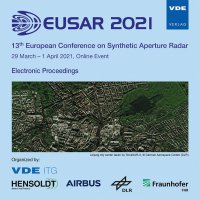Two-Dimensional Range Ambiguity Suppression in Multichannel SAR using Blind Source Separation Method
Konferenz: EUSAR 2021 - 13th European Conference on Synthetic Aperture Radar
29.03.2021 - 01.04.2021 in online
Tagungsband: EUSAR 2021
Seiten: 5Sprache: EnglischTyp: PDF
Autoren:
Amin, Ershad; Younis, Marwan; Krieger, Gerhard (Deutsches Zentrum für Luft- und Raumfahrt (DLR), Wessling, Germany)
Inhalt:
The future spaceborne synthetic aperture radar (SAR) development are in the direction of a system that has the ability to provide high azimuth resolution while having a wide swath, which in principle become two conflicting requirements. Current state-of-the art system that has those ability is multichannel in elevation SAR, which utilize digital beamforming (DBF) technique to form several receive elevation beams and simultaneously map different range swath by the means of scan-on-receive (SCORE), and these capabilities are well demonstrated with reflector antenna architecture. However, the implementation of these advanced DBF requires a precise knowledge of actual secondary beam pattern, which is extremely hard to predict for the case of reflector antenna due to its large geometry. One of crucial effect of the imprecise knowledge of pattern, including its variation along the azimuth direction (two-dimensional pattern), is the rising of range ambiguities to intolerable level. In this paper, a novel non-deterministic approach based on blind source separation (BSS) is proposed to estimate the antenna pattern that correspond to the suppression of range ambiguities that also varied along the doppler frequency. The method will be performed on-the ground under the normal operational mode, hence, the method doesn’t cost on-board complexity. A simulated multichannel-in-elevation based on TanDEM-X image is provided as an input, and it shows a good result in suppressing range ambiguities.


